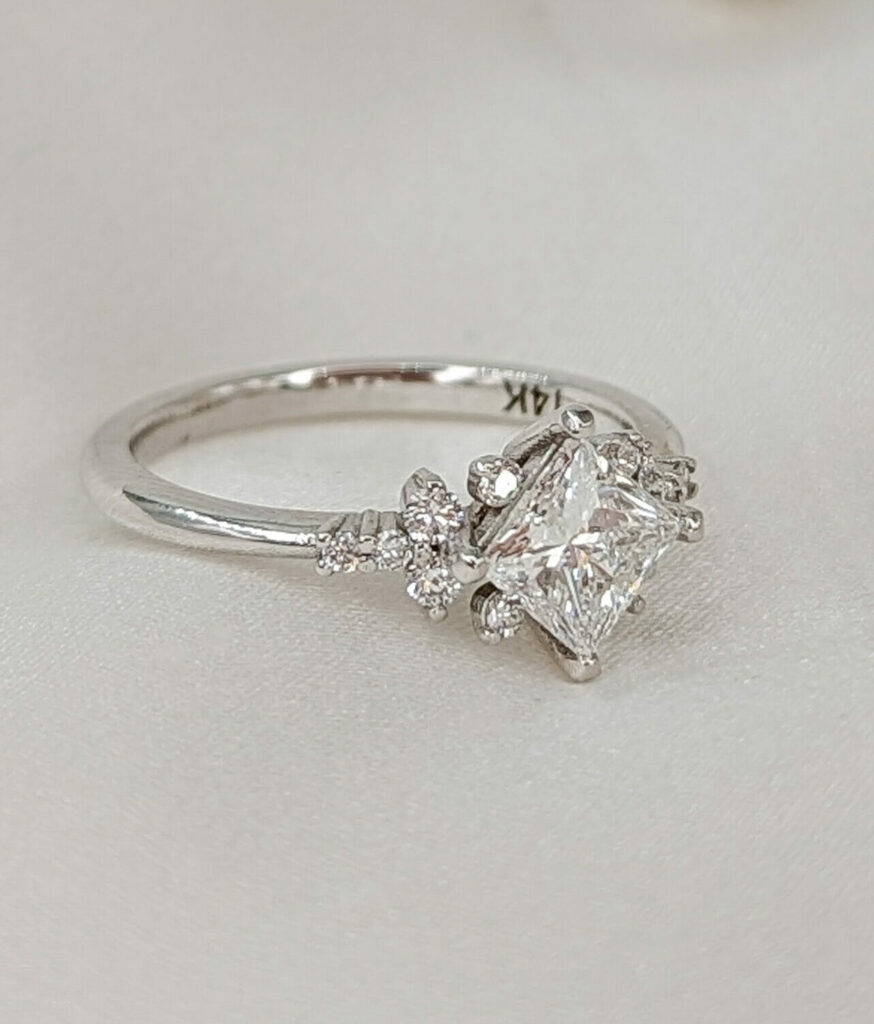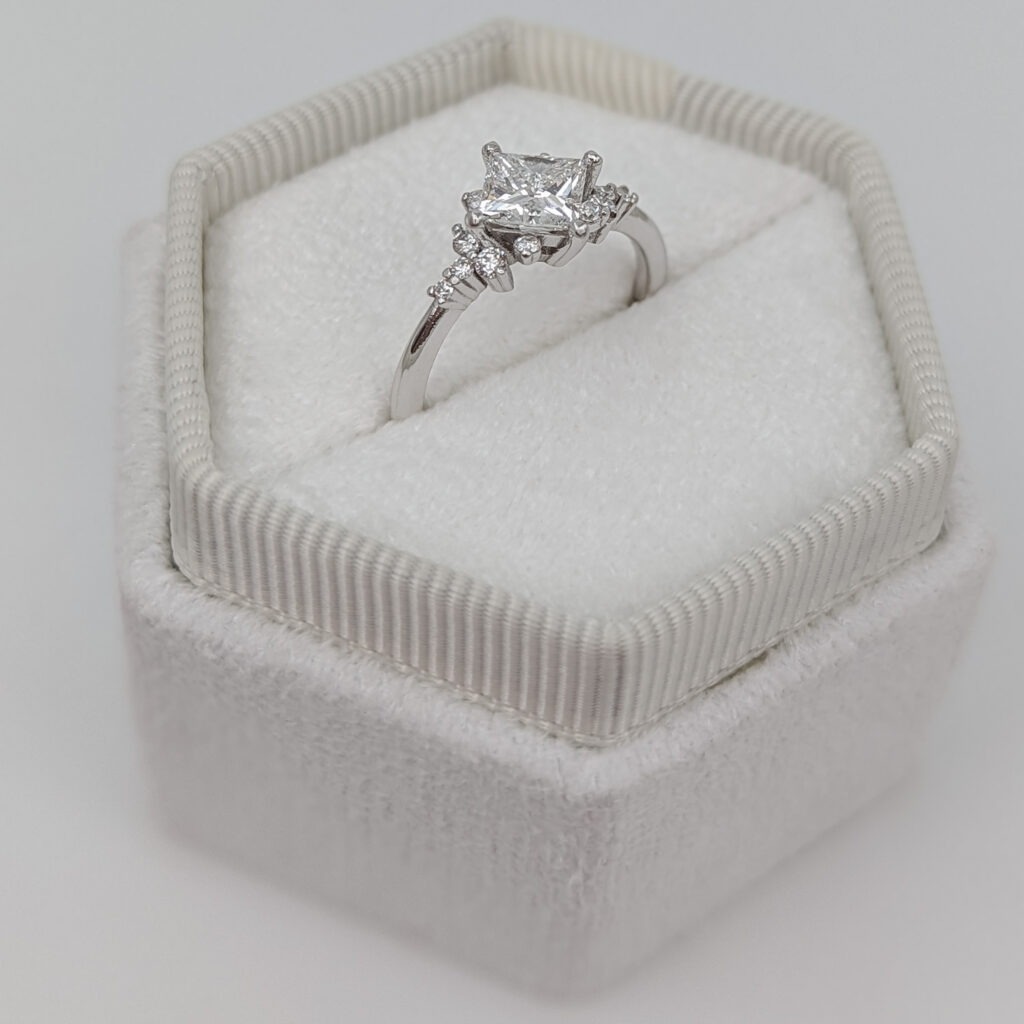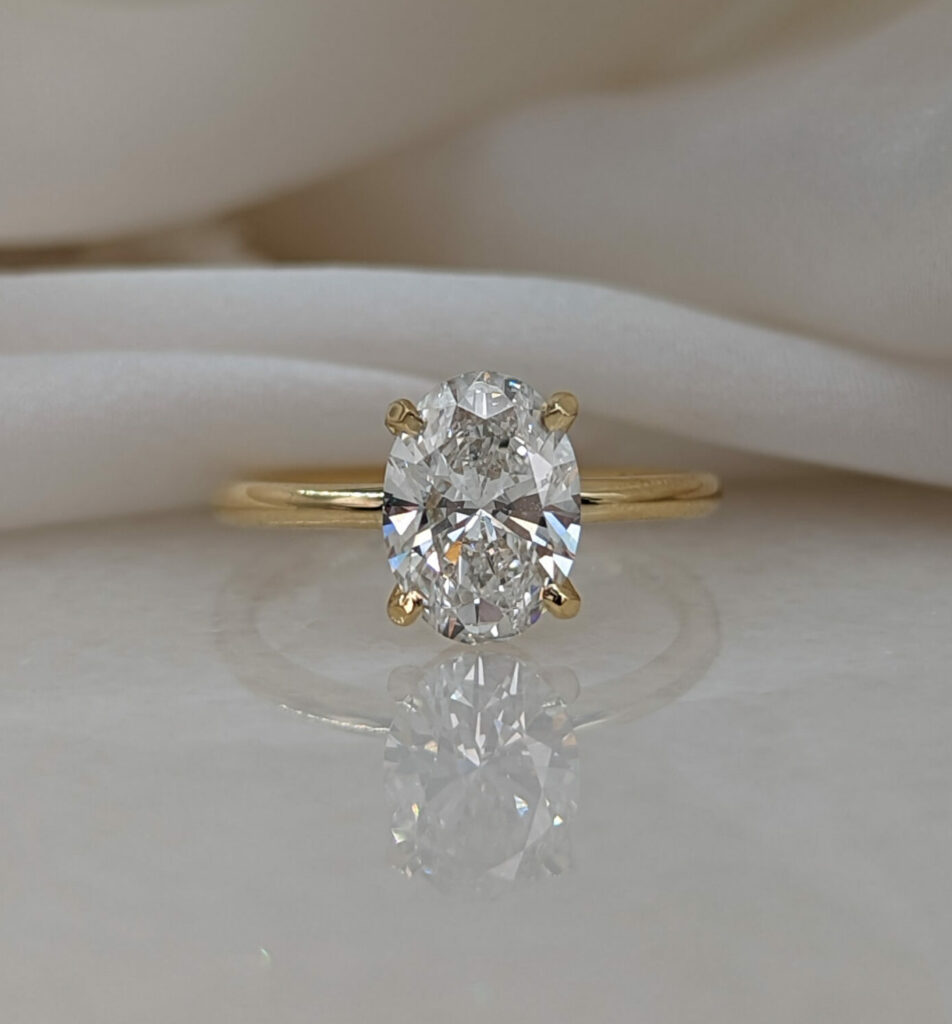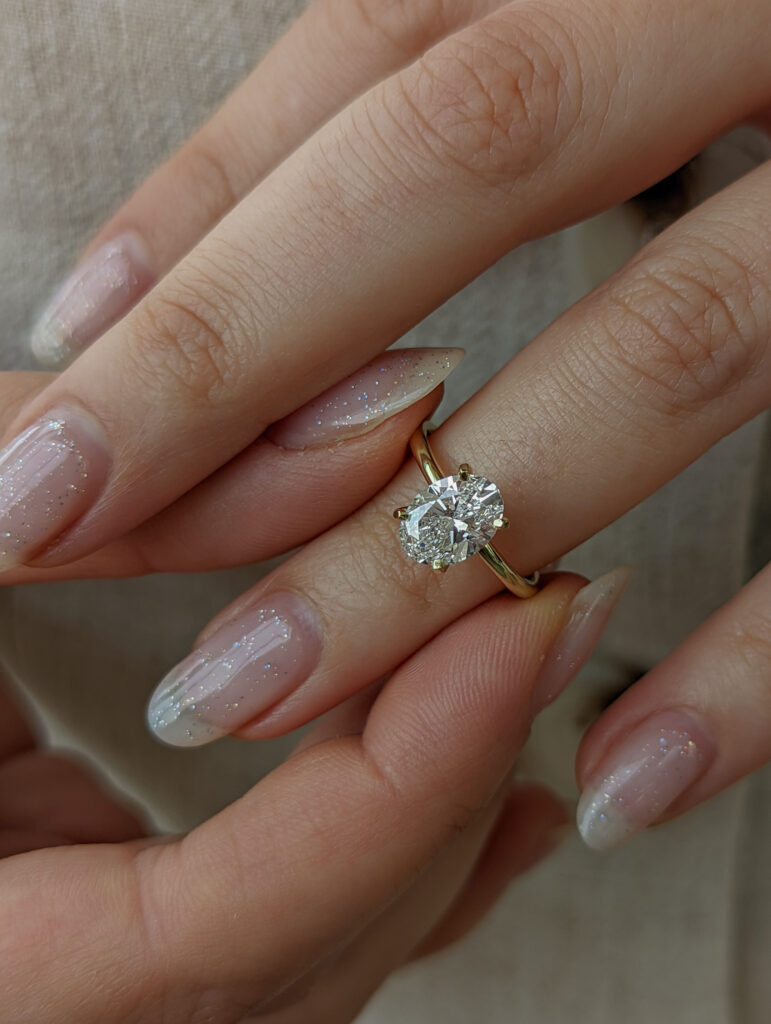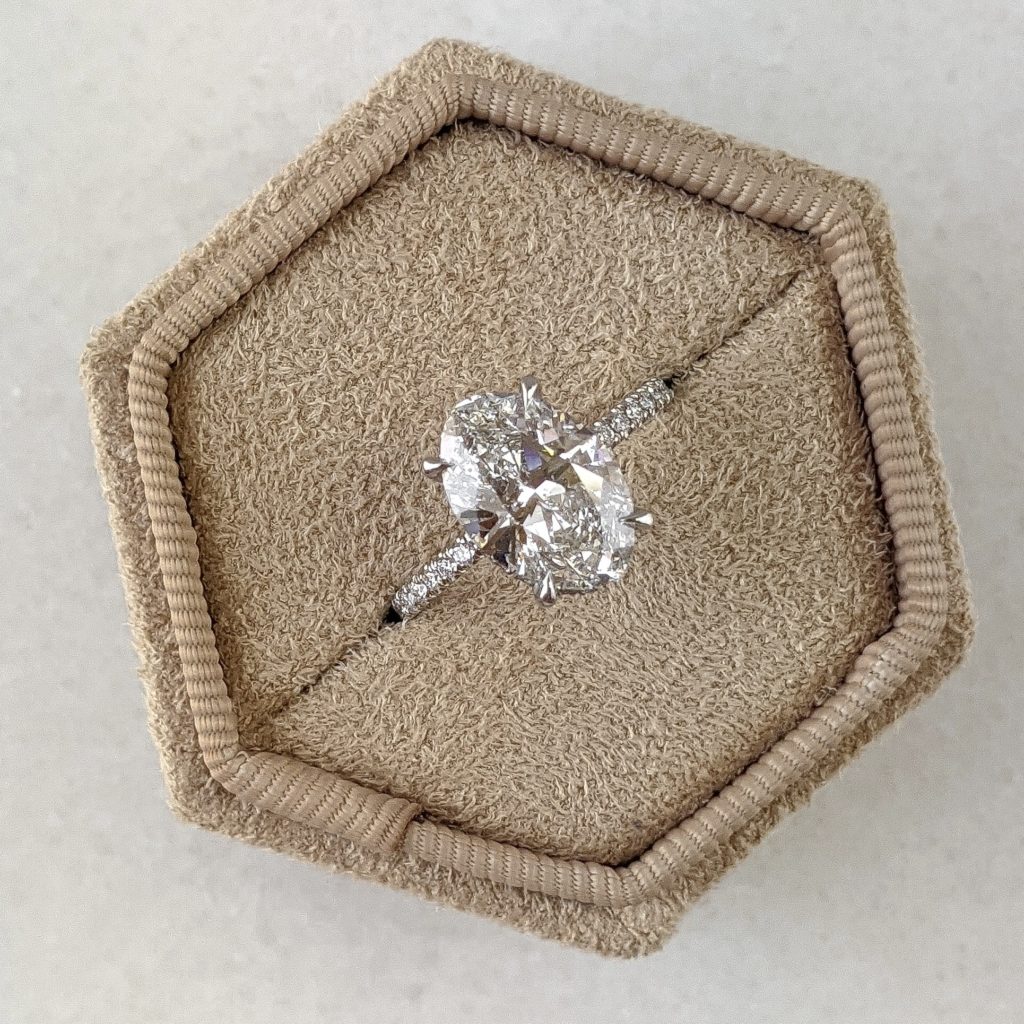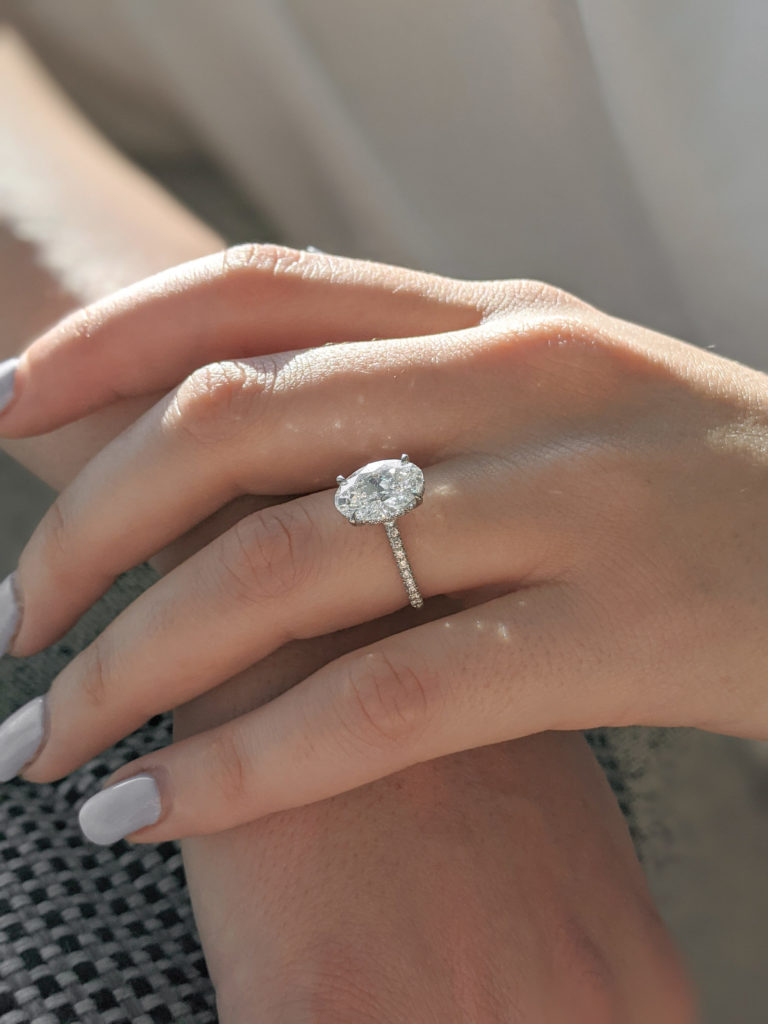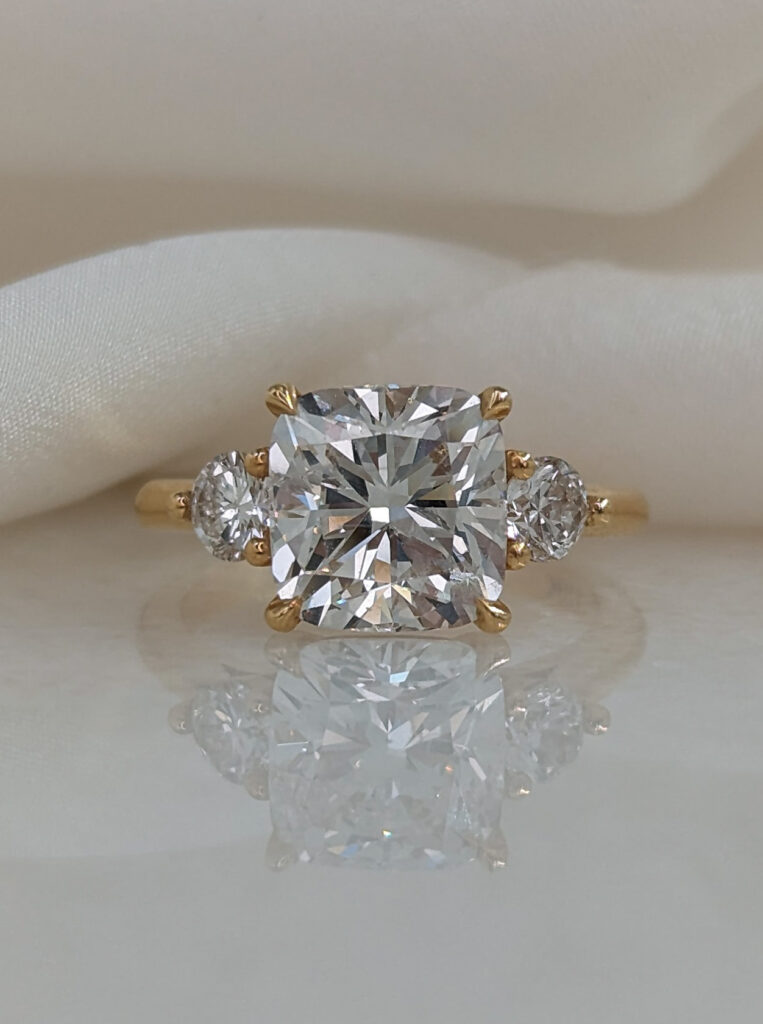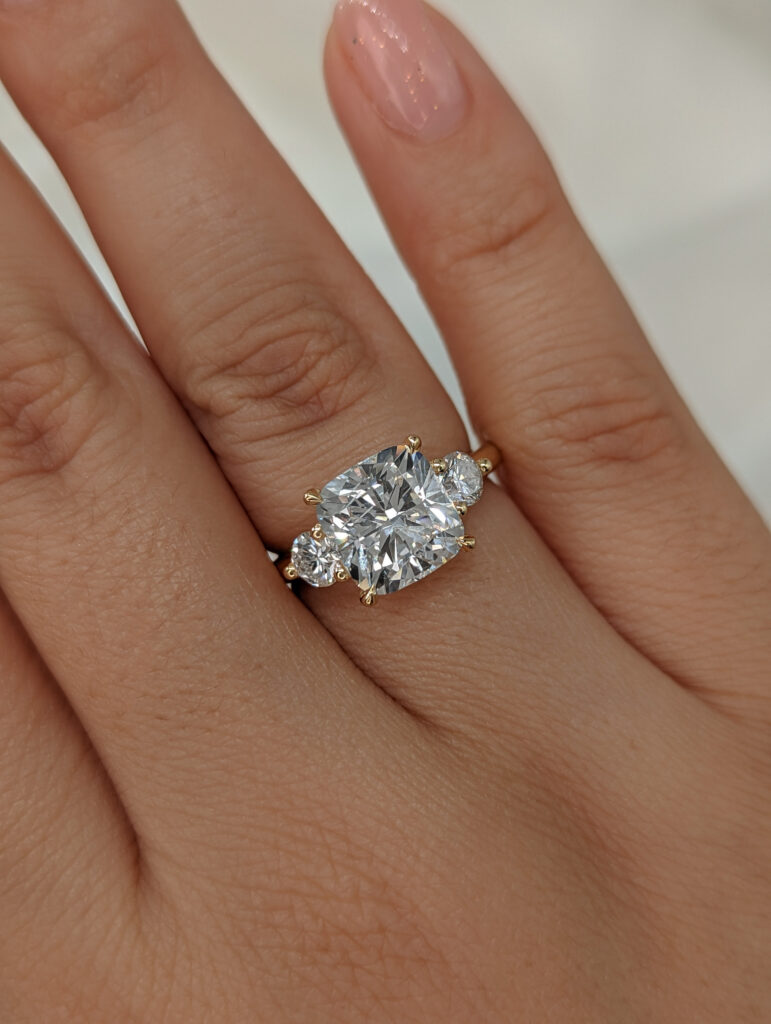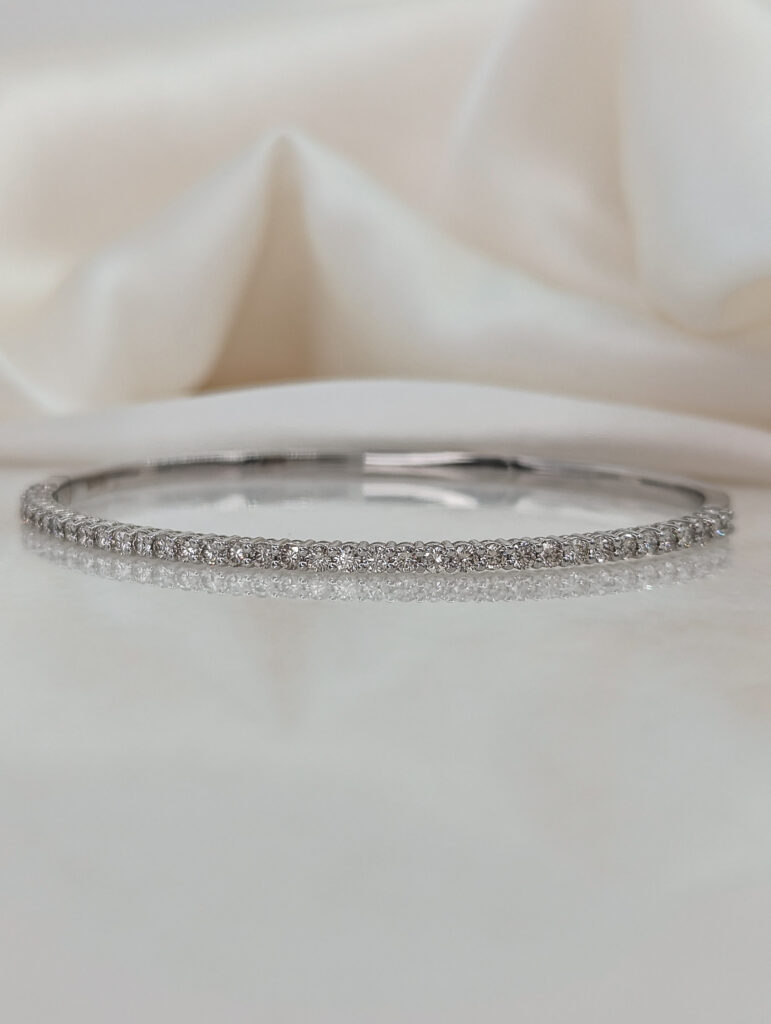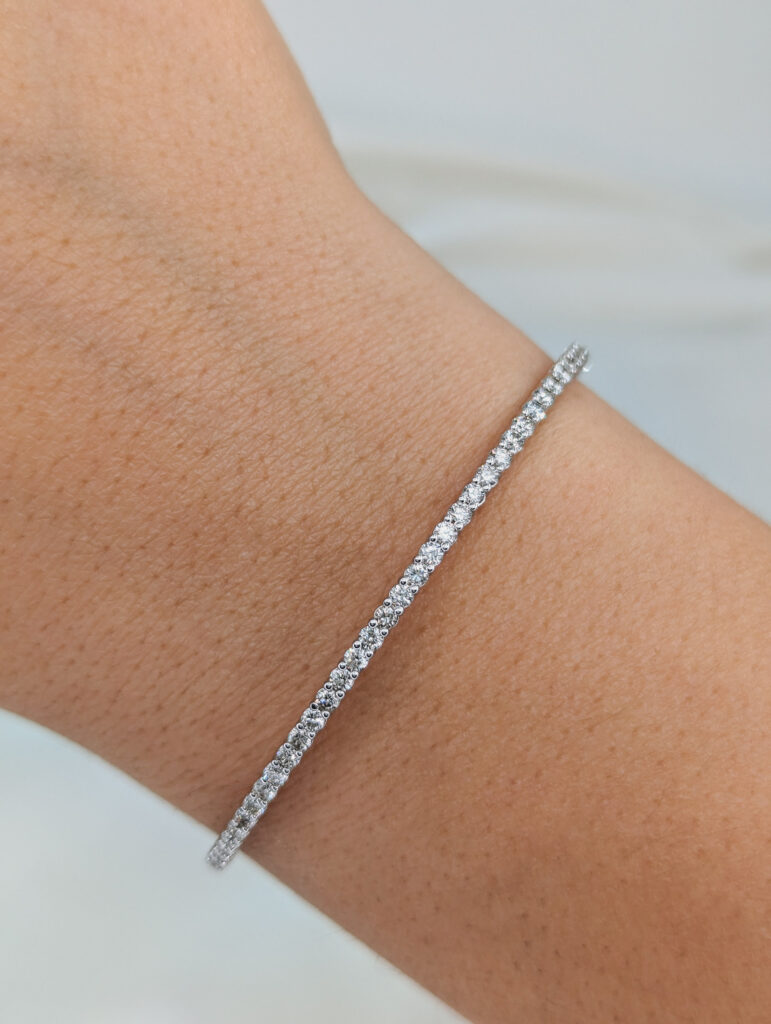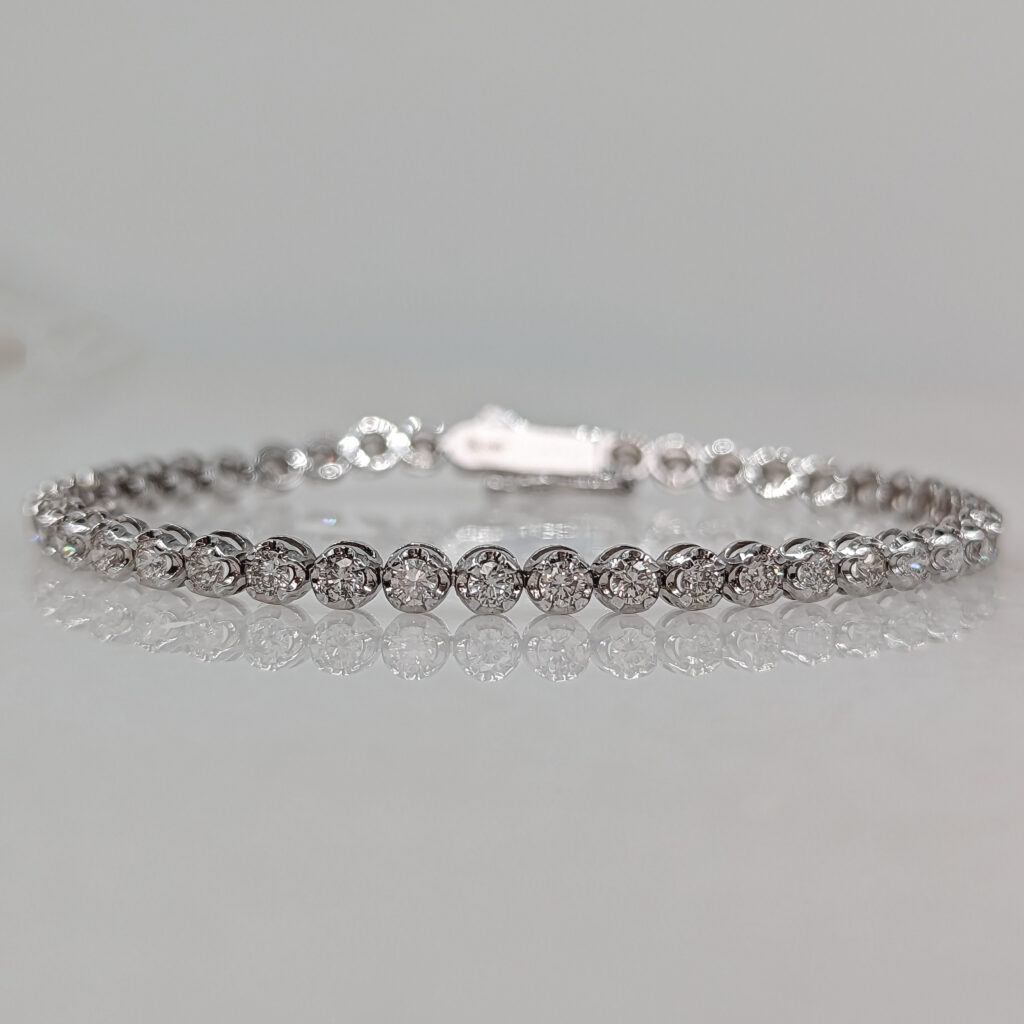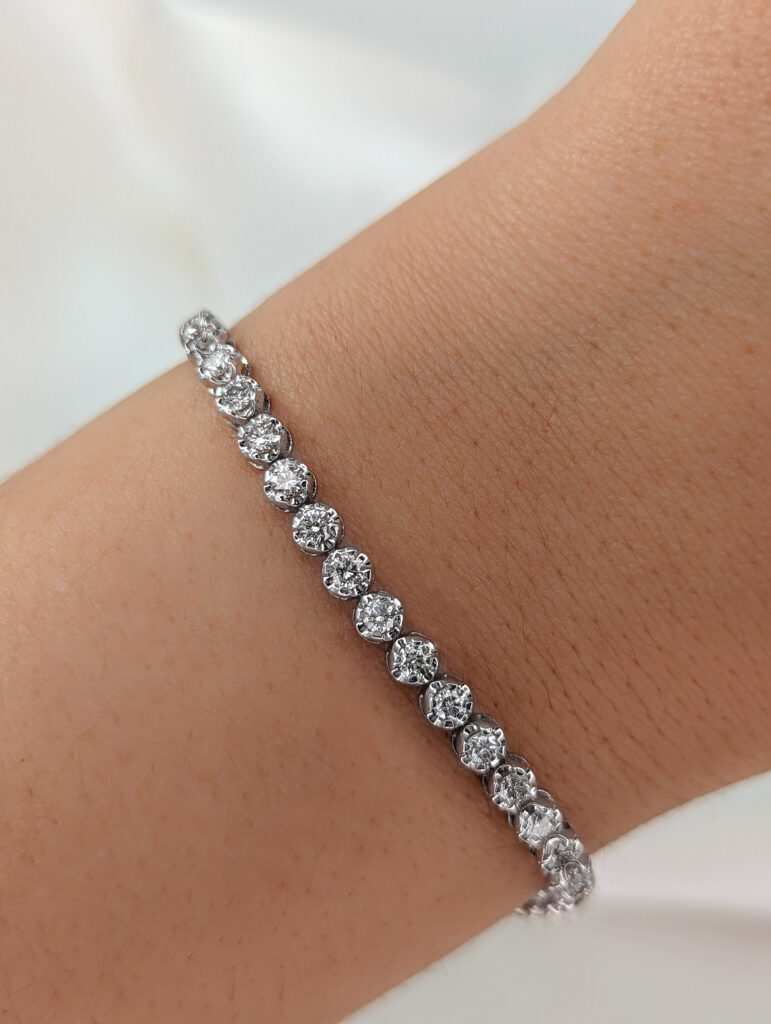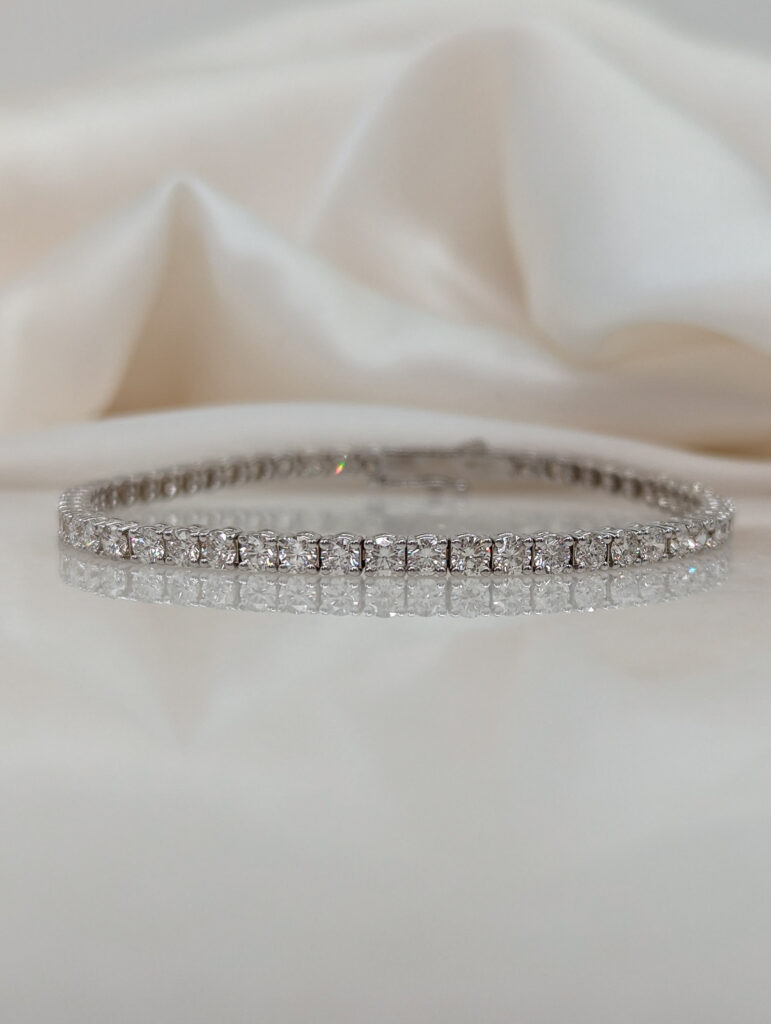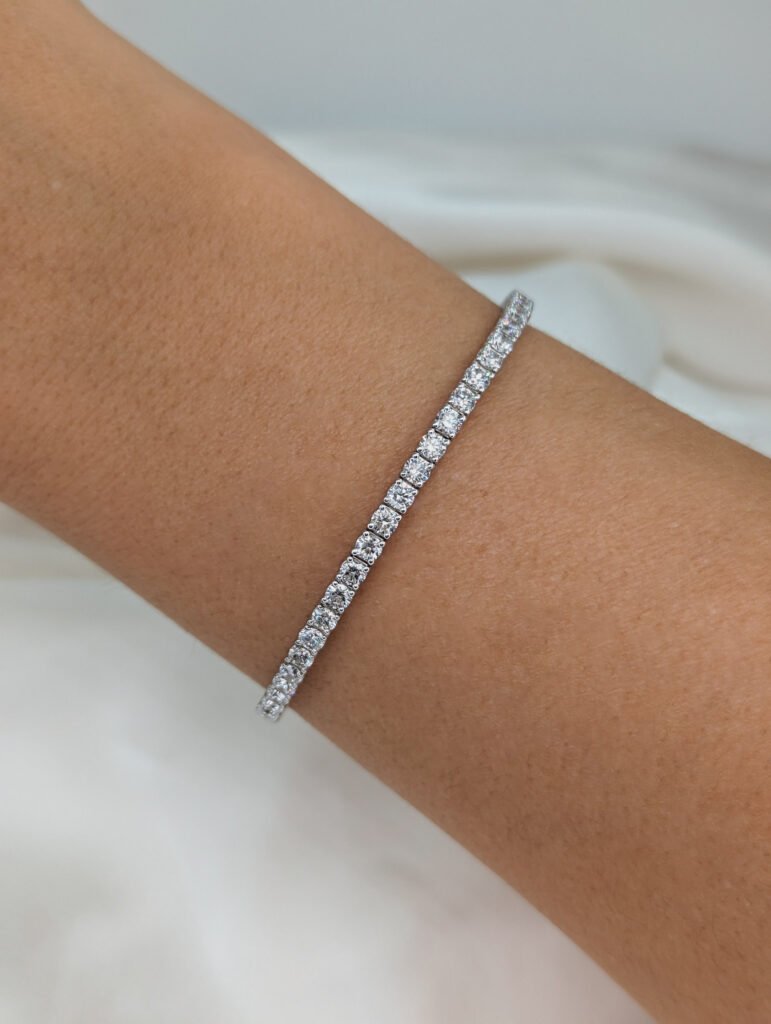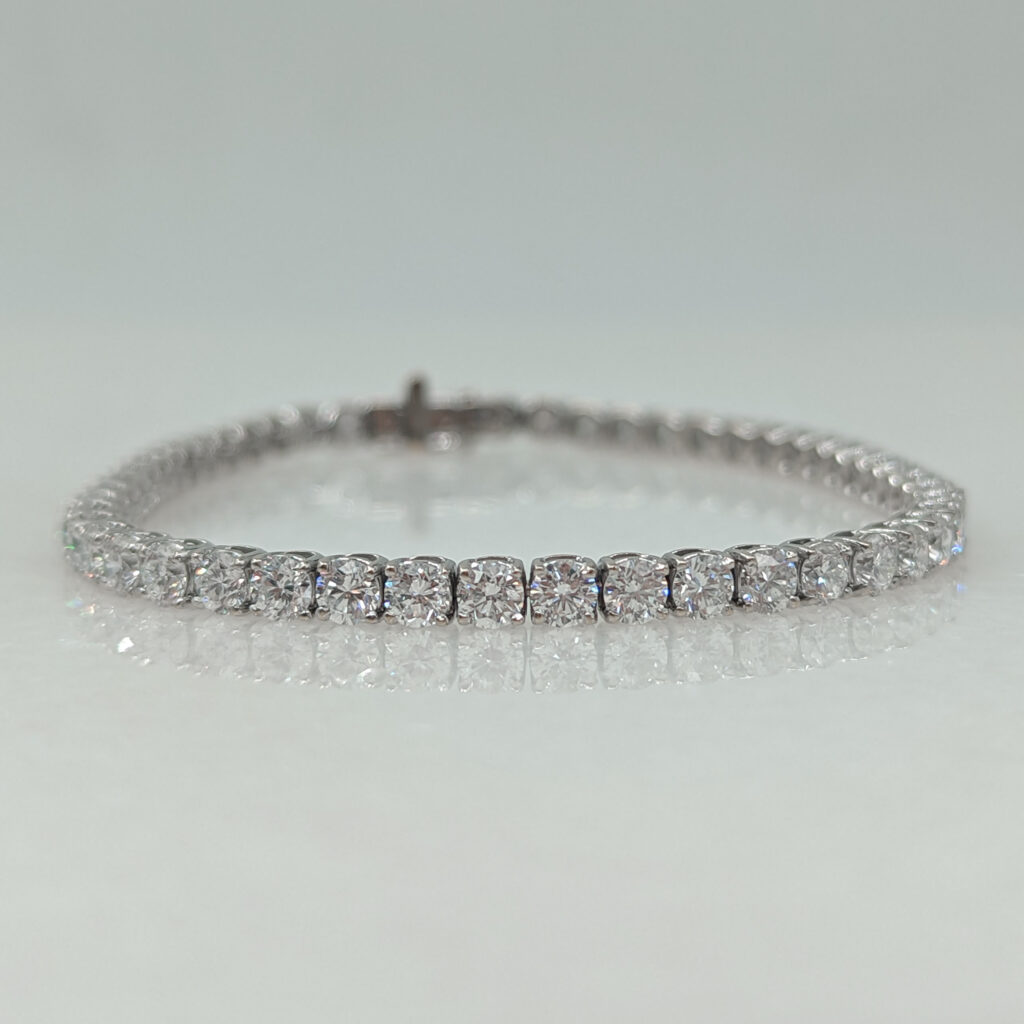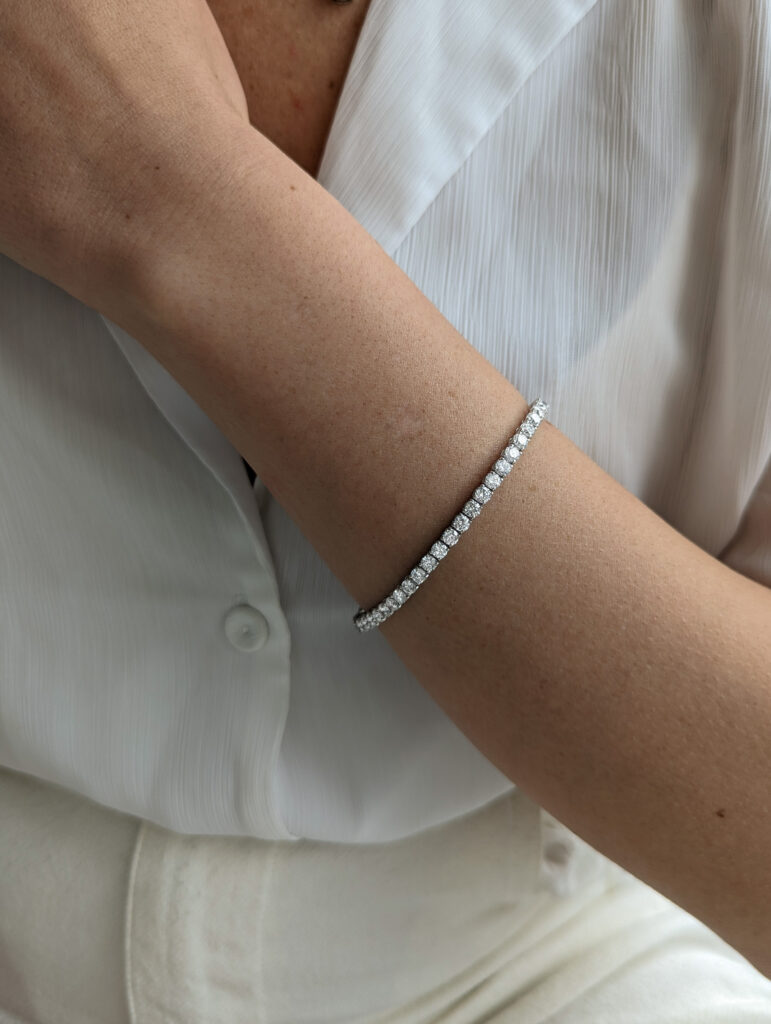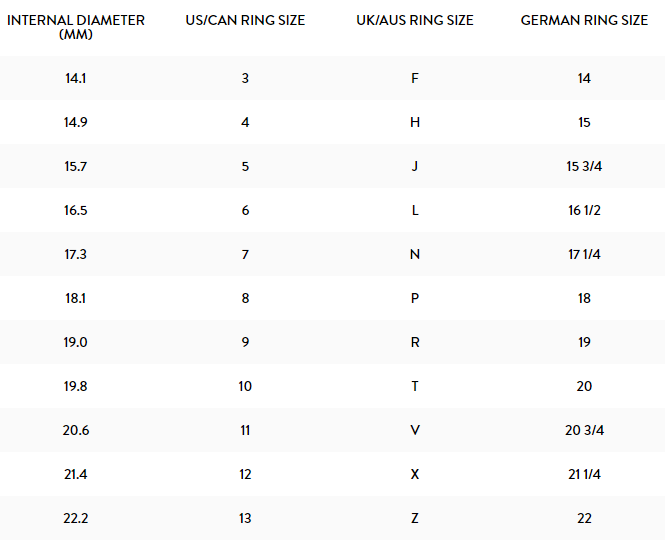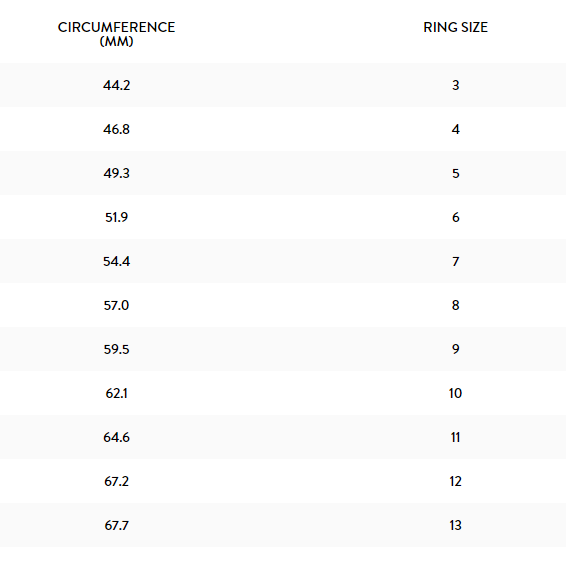Table of Contents
Diamond and cubic zirconia seem nearly identical from afar—they are colorless gems cut in similar ways.
Why is one considered more precious than the other? And why do diamonds have a reputation for brilliance that no other similar-looking stone can come close to? Where does the difference lie?
Though these two do not quite belong to the same league, we place them side by side because of their seeming similarity and find out more about each one’s uniqueness and character.
How can you tell difference between diamond and cubic zirconia? In this article, we will teach you how to know a natural diamond from its less valuable substitute.
How They Are Made
Cubic zirconia (CZ) is a synthetic stone made in labs by melting zirconium oxide—a hard white powder commonly used in ceramics and paint pigments—under intense heat. The crystallized material is then cut and polished, similar to the way diamonds are crafted to have facets.
Is cubic zirconia rarer than diamond?
No. Cubic zirconia is easily mass-produced and marketed. It can also be found in nature but in minimal amounts, and so they are commonly produced artificially.
In contrast, diamonds are products of the earth’s mantle or solid interior that form when carbon is subjected to severe heat and pressure. This process takes place over millions of years, with the diamonds brought to the earth’s surface through volcanic pipes formed by violent eruptions.
Needless to say, creating CZs is relatively easy, while forming diamonds is epic!
Though there are lab-made diamonds that do not take long to create, they are still considered true diamonds, unlike other synthetic alternatives. This is because lab diamonds also contain carbon and are made by mimicking the heat and pressure that natural diamonds are subjected to. As such, their production and structure are more akin to natural diamonds than CZ.
Structure
CZs are hard, but they are much less durable than diamonds. True diamonds are a full 10 in the Mohs scale of hardness, while CZ is at 8.5—pretty durable, but with much less longevity.
Years of use will give CZ scratches and a cloudy look while diamonds stay clear and unscathed. This is why they are perfect as heirlooms that last many generations.
In terms of density, cubic zirconia is a bit more dense than diamond. Because of this, a CZ and a diamond of the same carat weight may differ in size. The diamond would look slightly bigger than the CZ, depending on the cut. There are also some tricks to make the diamond look bigger.
Clarity and Color
Another approach to tell the difference between diamond and cubic zirconia is by checking their clarity and color.
While there are flawless diamonds, they are extremely rare and expensive, and not easily available in the market. The diamonds commonly sold and used as jewelry have inclusions or imperfections that are indicators of their authenticity.
Being formed miles under the earth under extreme conditions makes diamonds “intrinsically flawed,” which adds to their unique character.
Cubic zirconia, on the other hand, look too perfect and too colorless because they are synthetically made to look like that.
Brilliance
Does cubic zirconia sparkle like a diamond?
Cubic zirconia may give off some kind of sparkle, but not in the same way a diamond does. Widely valued for their brilliance, true diamonds give off white light under natural light. At the same time, CZs reflect rainbow-colored light because of its excessive light dispersion or the process of splitting white light into different colors.
Diamonds also disperse light at a lower rate (0.044) than CZ (0.058–0.066). Cubic zirconia’s strong rainbow color reflection and lack of white light brilliance is the most common indicator that it is not a natural diamond.
CZ also has a lower capacity for light refraction or the bending of light as it passes from one facet to another, making its brilliance less intense than a genuine diamond.
It is important to note that different diamond cuts have different levels of brilliance.
Value
CZs are much, much cheaper than real diamonds. You can buy a one-carat cubic zirconia for less than $20, while a one-carat D grade diamond costs around $10,000, depending on the cut.
The way they are formed, their composition, durability, rarity, long history of prestige, and superior beauty all contribute to the high value of diamonds. Their famous fire, sparkle, and brilliance make them extremely precious and more than worthy of their hefty price.
Conclusion
A close look at the gem is all it takes to know the difference between diamond and cubic zirconia.
The diamond is undoubtedly in a class of its own. While those who are not yet able to make that big-ticket purchase opt for CZs as a provisional jewel, their aspiration for the real thing remains. There is simply no worthy substitute for a true diamond.
Its high value makes it an investment piece that can be passed on to future generations. Its stature as a coveted stone is forever and universal.
The Stone For Your Milestone
Its beauty, elegance, and value elevate the diamond to its iconic stature as THE stone for engagement rings. Its fire and sparkle capture the intensity of love’s journey to marriage and adds to the timeless romance of proposals.
When it comes to expressions of genuine love and devotion, an authentic diamond ring like this 14K oval cut Olivia diamond ring set in white gold will convey the most profound feelings in a poetic, awe-inspiring way.


